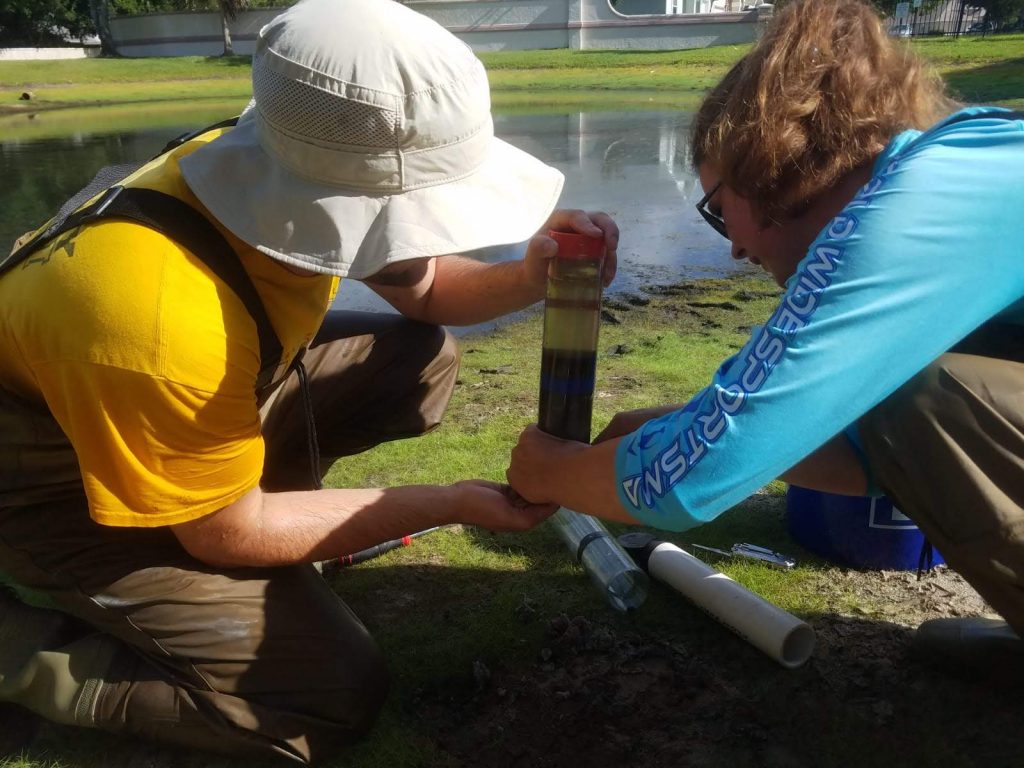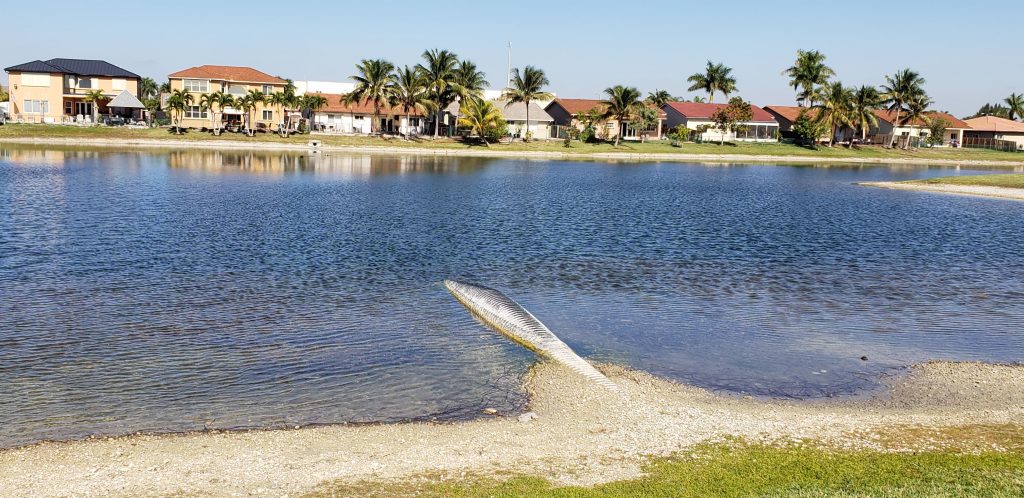By Alexander J. Reisinger, Steven P. Hohman, Ashley R. Smyth and Eban Z. Bean
If you live in an urban area, you have likely noticed small lakes or ponds in your community that are often paired with newer residential or commercial developments. Maybe you fish in them, canoe across them or watch wildlife attracted to the water. These ponds are a crucial part of your community’s stormwater management infrastructure. Stormwater ponds are designed and managed to reduce flood risk and remove pollutants, such as nutrients or sediment, associated with developed landscapes.

Photo by Daniela Daniele
STORMWATER PONDS ARE EVERYWHERE
Stormwater ponds are a common strategy used to lessen impacts on landscape hydrology caused by urban development. There are different types of stormwater basins, including wet ponds (hereafter referred to simply as ponds) that have a permanent pool of water, or dry infiltration basins that temporarily hold water after rain events but drain rapidly and are dry most of the time. The type of basin in your community depends largely on the geology and hydrology of the landscape, but regardless of the design, its intended functions of flood control and water quality improvement are similar.
Stormwater ponds are a typical feature of developed landscapes throughout the United States and globally. In Florida, there are at least 75,000 stormwater basins. Despite being so common, little is known about how well these basins, and particularly ponds, perform in terms of water-quality improvements, and what processes drive nutrient removal within ponds. Researchers and Extension specialists from the University of Florida Institute of Food and Agricultural Sciences (UF|IFAS) are looking to improve their understanding of stormwater pond functions and to provide strategies for improving the health of stormwater ponds.
STUDYING HOW PONDS AFFECT WATER QUALITY
Runoff from urban areas commonly contains excess amounts of nitrogen and phosphorus from a variety of sources in the landscape (i.e., fertilizer, grass clippings and pet waste). One of the multiple functions of stormwater ponds is to retain sediment and nutrients before these pollutants enter natural surface water or groundwater systems. Nitrogen retention within stormwater ponds is of interest because natural microbial processes occurring within pond water and sediments can permanently remove nitrogen, converting nitrate running off the landscape into non-reactive nitrogen gas, which makes up 78 percent of the atmosphere.
UF/IFAS researchers recently performed a study of this permanent nitrogen removal process to better understand the drivers of water-quality dynamics in ponds. Sediment cores were collected from ponds ranging from 10 to 30 years old. After collection in the field, sediment cores were brought to the lab to measure changes in nitrogen concentrations in the water and to identify what factors (i.e., pond age, sediment organic matter content and region) control nitrogen removal rates. Samples were collected for this study in Gainesville and Miami in January and June 2019 to identify how these processes change regionally and seasonally.
Preliminary results from January found that ponds had very low nutrient concentrations under normal conditions, but that ponds have the potential to remove excess nitrogen that comes from urban runoff associated with rain events. In the study, older ponds appeared to remove more nitrogen than younger ponds, suggesting that pond age may affect nutrient-removal rates. Samples from June are currently under analysis to compare seasonal dynamics and hopefully to identify specific pond characteristics that control nitrogen removal. If these factors can be identified, recommendations can be developed for better ways to design and manage stormwater ponds to maximize nutrient removal.

Photo by Christina Currais
NEW PROGRAM FOR PONDS
Results from this study will be incorporated into the UF/IFAS Healthy Pondsprogram, a forthcoming Extension program currently under development. The Healthy Ponds program is being created for various stakeholders, including residents, homeowners’ associations and pond managers. Using a range of experts from UF/IFAS, the program will provide information on what a healthy pond should be, common issues with ponds and potential solutions to problems.
This program will focus on stormwater pond maintenance while covering a range of environmental aspects, including flood control, water quality, algal dynamics, aquatic weed control, invasive species and fish. Although this project is still in the planning stage, the objective is to provide information for stakeholders to make informed management decisions to ensure a healthy pond while also protecting natural resources further downstream.
The number of people living in urban areas continues to grow, and this is particularly evident in Florida. As neighborhoods are built to house new urban residents, infrastructure is needed to minimize the impacts of urbanization on flooding and water quality. As ponds are the most common infrastructure used for stormwater management, it is increasingly important to understand the drivers of nutrient removal in these ponds to ensure they function properly. This improved understanding will allow for protection of the water quality, habitat, aesthetics and recreational opportunities of natural waterways. Overall, these programs will help scientists, managers and engineers gain a better understanding of how ponds are functioning, giving them more tools in their toolbox to minimize impacts of urbanization on water quality.
Alexander J. Reisinger and Ashley R. Smyth are assistant professors and Steven P. Hohman is a master’s student —all in the UF/IFAS Soil and Water Sciences Department. Eban Z. Bean is an assistant professor in the UF/IFAS Agricultural and Biological Engineering Department.









